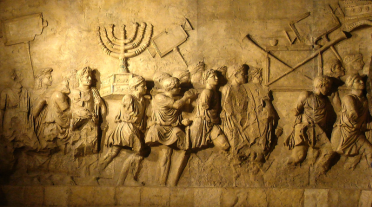Every week, parshaoftheweek.com brings you a rich selection of material on parshat hashavua, the weekly portion traditionally read in synagogues all over the world. Using both classic and contemporary material, we take a look at these portions in a fresh way, relating them to both ancient Jewish concerns as well as cutting-edge modern issues and topics. We also bring you material on the Jewish holidays, as well as insights into life cycle rituals and events...
This week’s parsha, Behaalotecha, contains the laws of lighting the menorah – the seven-branched candelabra - in the Temple. One of the interesting features of the menorah is the commandment to arrange the wicks in such a way as to have all the lights facing inward, towards the menorah’s central stem.
The immediate, general symbolism of this law is fairly obvious: rather than lighting seven separate, individual lights, we arrange the three lights on one side and the three on the other so that they all look as if they are unified, together, facing, and huddling, as it were, around the center light. The broad message of unity and of a single purpose is clear. Although each lamp is lit separately, and does stand alone, they are as one in sharing a central purpose and mission. The central candle which they all face can simply stand for “the center”; the shared values, goals, and traditions of the Jewish people, and, in fact, of all humanity. The point is clear; although we all, as individuals and as separate groups of people, have distinct identities and characteristics, we all also must seek out a common ground, a center around which we can all rally and for which we will all work.
The Sforno, in his commentary on this law, chooses an interesting specific set of differing individual traits on which to focus. He says that the three candles on the right side of the menorah stand for those who deal with spiritual things, ultimate things, while the left side represents those who are worldlier, practical, and involved with the day-to-day affairs of society. Both sets of people, the spiritual and the practical, need to understand that they share a common ground, a common goal, a center around which they can come together, so that, using their different orientations, they can work together, assisting one another, to improve and uplift the world.
I’m not sure if it’s a good thing or not, but, today, I can think of many more dichotomies which could be symbolized by the two sides of the menorah, beyond the spiritual/practical one mentioned by the Sforno: liberals and conservatives; flag-waving Zionists and critics of Israel; Orthodox and non-traditional; Democrats and Republicans; vegetarians and meat eaters; gun enthusiasts and smarter people (sorry, I couldn’t help myself, I apologize), etc., etc. The thing is, the message is the same. It is only by realizing that we all share a center, a commonly-held desire for good, for improving the world, and that all these dichotomous positions can be, and must be, brought together around that common center, that inner light, that we can do what we all want to do: make the world a better place.
Shabbat Shalom,
Rabbi Shimon Felix



Get inspired by Behaalotecha Divrei Torah from previous years